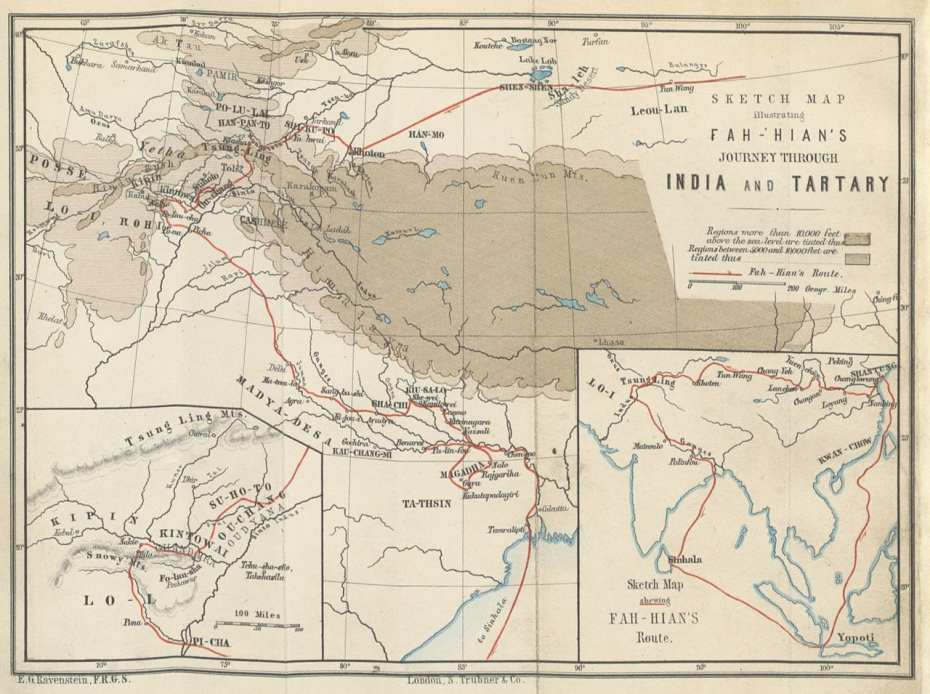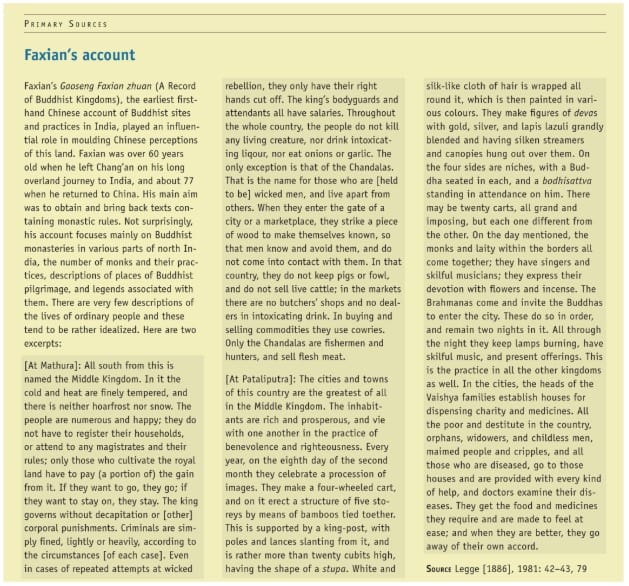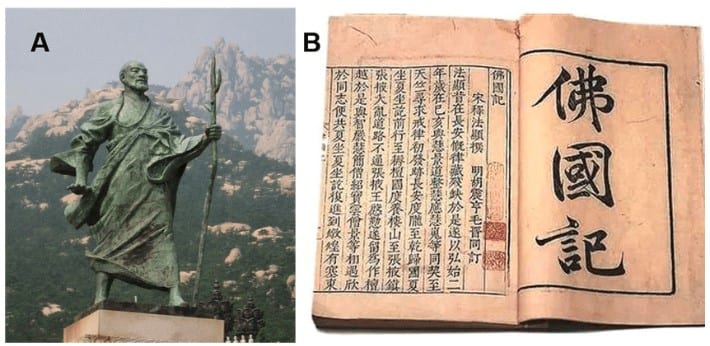Chinese monk Faxian’s Captivating account of Ancient India
Chinese monk Faxian (Fa-Hsien, Fa Hien) walked all the way to India between 399 and 414 CE.
Faxian was over 60 when he left Chang’an on his long, dangerous journey through Gobi desert, Kazakhstan entering India via Kashmir. Then walking down all the way to Mathura, Pataliputra (Patna) and Madhya Pradesh region. He later left on ship back to China. Imagine the level of difficulty when he would have decided to go through the desert, the cold and harsh Himalayas and then return via the tough, stormy seas.
Interestingly, traveling on foot for spiritual awakening and deeper learning has been part of the Buddhist tradition in the Far East. Kaihōgyō, or encircling the mountain was also a very popular practice amongst the Tendai Buddhists in Japan.
He was unhappy with the “mutilated and imperfect state of the collection of the Books of Discipline” which he wanted to get from India again. James Legge says that he along with Hwuy-king, Tao-ching, Hwuy-ying and Hwuy-wei decided to go to India to seek the disciplinary rules.
Faxian’s Journey to India
They started off via Lung [in eastern Gansu], Chang-yih [north and west of Lanzhou, near the Great Wall] and then ahead into the Gobi desert area.

His account has been shared by James Legge in his book “A Record of Buddhistic Kingdoms Being an Account by the Chinese Monk Fa-Hien of His Travels in India and Ceylon (A.D. 399-414) in Search of the Buddhist Books of Discipline“
Faxian describes the India he saw at that time. And, he shared that in his account called Gooseng Faxian zhuan (A Record of Buddhist Kingdoms).

Faxian was in India during the reign of Chandragupta II or Vikramaditya.
He was primarily interested in Buddhist religious records and artifacts. He describes the kingdom and people in the kingdom to be rich, peaceful and prosperous.

Faxian on People and their life
Madhya-desh or Middle Kingdom, the area south-east of Mathura has been described as a populous area with great climate and joyful people.
He shares how people in the area would eat. They would not consume meat, onions or garlic and had no intoxicating drinks.
Only Chandalas lived apart and would eat meat, were fishermen, and would hunt. In the normal town markets there were no butcher shops or intoxicating drinks. Nor would people keep pigs or fowl.
First Hospitals – for the poor and destitute
The merchants (described by the translator as Vaishyas) had established centers in the kingdom for the poor and destitute. Similar to dharamshalas in recent times. In these centers, poor and sick would come and be given lodging, food, and medicines. When they would get better, they would leave off of their own accord.
These centers were very similar to current day hospitals.
Faxian on Crime and Punishments
The king’s rule was just, fair and not cruel. There were no corporal punishments. The citizens were not required to register their households or attend to any magistrates or their rules. They were independent and could choose to live as long as they wanted in an area and leave if they so wanted. The maximum punishment was for the wicked rebels who had their right hands cut off.
Other than that, people would be fined for their crimes. The fines could be light or heavy based on the severity of the crime.
There were celebrations every month and large carts (similar to Jagannath rath yatra? or Republic day Tableau) – 20 of them would be taken through the town with different images of the devas.
They would light lamps the whole night and music and celebrations would go on through the night.
That era was a time of great prosperity and peace in India. Even though Faxian (Fa Hein) did not particularly comment on most of the spiritual work being done in the area, the fact is that the Buddhists and others seeking spiritual instruction would converge in the country. And, like Faxian pointed out migration and movement between regions and kingdoms was common.
That was because it was seen as one country – India. We have discussed about why India was always one civilizational entity in our earlier post – Was India a nation before the British? Please read and share that too.
Featured Image Source




Comments ()